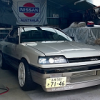Tomei Pon Cams S2 Rb25
Announcements
-
Similar Content
-
Latest Posts
-
The door and bonnet gaps look very tight for such cheap models 👍
-
I haven’t taken them out of the cases yet inside the box is this packaging which is pretty much like a massive blister pack
-
Purchased a NC MX5 a while ago Basic suspension mods done, BC coils and Whiteline sway bars New DBA calipers, discs and pads Added some 17 x 8 Konig Decagrams with 215/45 17 PS5's Added some typical NA bolt on's, i.e. full exhaust and intake Added 0.5ltrs with a MZR2.5 swap, nice bump in torques Found a detachable hard top which is locked in for a colour match with my local paint shop in Feb 25, this also includes some PDR as it has received a few love taps from parking in the local shops when in the hands of my Minister for War and Finances, me, I park nowhere near other cars and typically park on the street The little thing is awesome, I drive it everywhere, it handles like a dream whether I'm up it or just cruising But now, because I'm a idiot, I keep looking at turbo kits....... did I mention I'm a idiot Why is dose so appealing All of the NA 2.5 glory, well.......until sometime in 2025 anyway....🤪
-
By Murray_Calavera · Posted
I would not be surprised if you are the only person on earth that has the interest/desire to do that lol. The Haltech base map is a really good starting point, the car will fire easily and drive very well, even on mild boost levels. To me, following your advice sounds like some sort of ancient Chinese water torcher lol (this is not an insult Josh, never change <3) -
Those car show concepts from the 2000's and 2010's like the Floria and IDx were brilliant and should've gone ahead, at least one of them. But neither Honda nor Nissan are thinking about affordable performance any more, which is truly sad. Even if Toyota's liquid hydrogen ICE development reaches the point where it's commercially viable and the infrastructure to support it, Honda/Nissan would have to wait until Toyota allow fee access to their patents to offer it with any smaller performance models they released to take advantage of it.
-







Recommended Posts
Create an account or sign in to comment
You need to be a member in order to leave a comment
Create an account
Sign up for a new account in our community. It's easy!
Register a new accountSign in
Already have an account? Sign in here.
Sign In Now